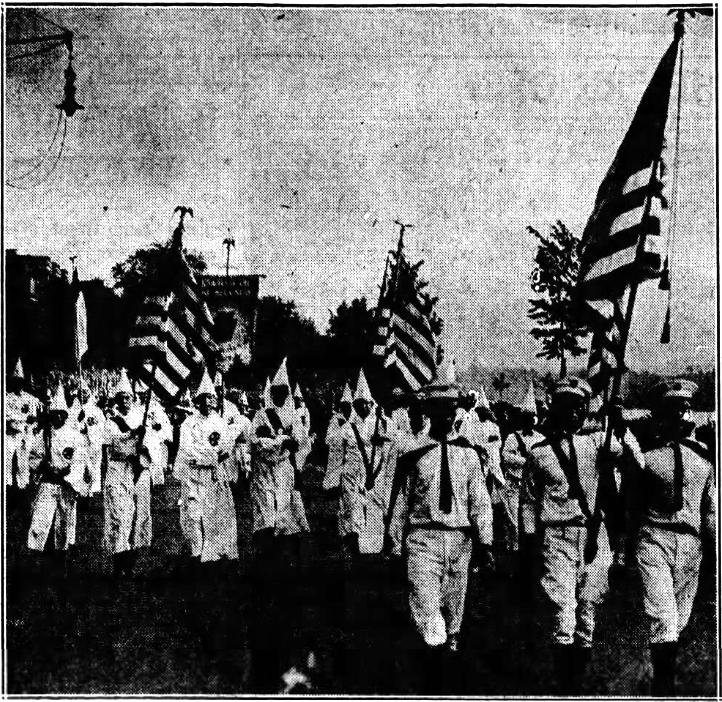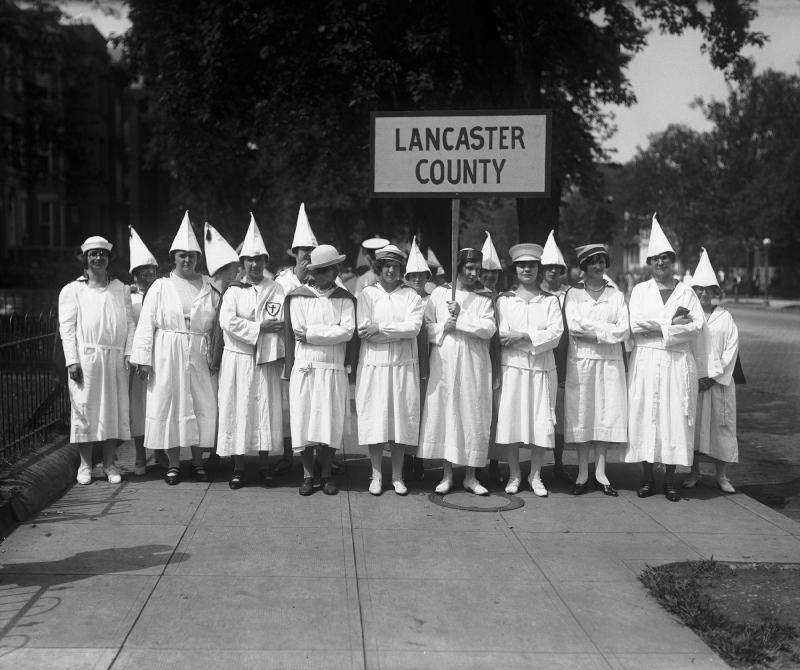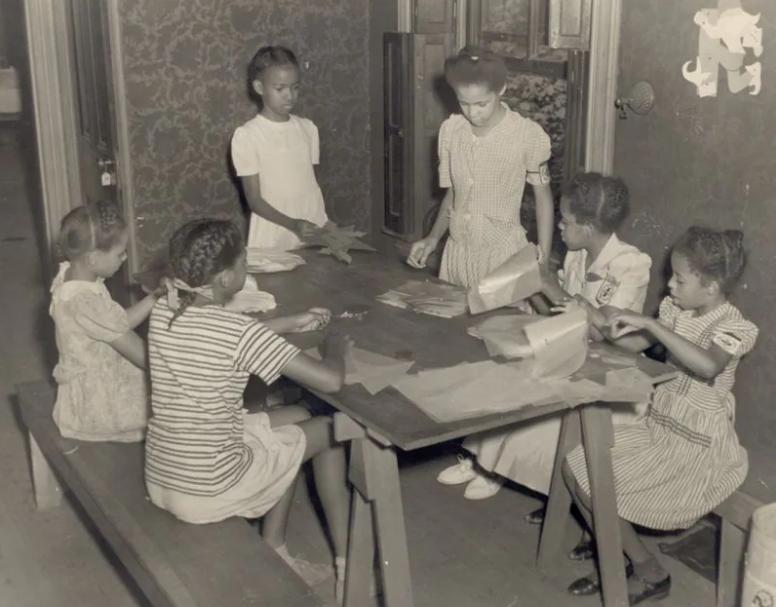
On September 7, 1925, the Ku Klux Klan held a rally at Island Park in Harrisburg. With fireworks, a live band, and thousands of attendees, the rally showcased the strength of the Klan and its white supremacist messaging in Central Pennsylvania.
Picture the scapes and sounds of Harrisburg’s own City Island, nestled in the middle of the Susquehanna River. Perhaps you hear the ambient roar of a Senators game, the rush of a passing steamboat, or the lively conversations of pedestrians rounding the trail. Find yourself in the same place nearly a century ago, and a drastically different scene would stretch out before you.
A sea of bright robes over five thousand strong dominates the streets, as banners emblazoned with the Ku Klux Klan’s red, black, and white emblem ensnare the surroundings like an opulent disease. Patriotic speeches echo through the entire spectacle, broadcasting all manner of nationalist prejudices. This “Great Demonstration” marches through Harrisburg without an ounce of the Klan’s former secrecy.
This bold show of Klan power in 1925 is just one peak in a long cycle of racial tensions in America. These tensions ebbed and flowed over time, as did the responses of African American and European American communities. Racial inequality was prevalent, but it was not a constant—there were many who fought against it.
Though the Civil War had ended, the effects of slavery still permeated both the North and the South. While the original Klan met its end in 1871, a 1915 Klan revival in Tennessee soon made the Keystone state an important bastion for the organization. With a state-wide membership numbering in the tens of thousands, the Klan garnered increasing popularity not by white supremacist doctrine alone, but also through an emphasis on religious nationalism and patriotic brotherhood. This new wave of the Klan was anti-Catholic, anti-Semitic, and anti-immigrant, appealing to a belief that true American values were white and Protestant. Many white, working-class, native-born Americans bought into this narrative, and the Klan increased in numbers and in power.
This growth culminated in the 1925 rally–a massive effort that bolstered the Klan’s grip on Pennsylvania. The Klan used the rally to paint itself as a benevolent, family-focused organization, further softening public opinion in the capitol region. The Telegraph touted the Klan as a “great organization,” citing their remarkable differences from the “masked, night raiding organization it had been so often pictured.” Advertisements for the rally itself promised “fun all day” with attractions such as live bands, food, and a major fireworks display.
The parade featured thousands of hooded Klansmen from multiple counties, led by one Sam D. Rich of Pittsburgh, one of the Order’s “Grand Dragons.” Women, too, were given bold representation, with groups like the “Altoona Kitchenettes” performing music for their fellow marchers. Speeches by Klan-affiliated doctors, priests, and officers at City Island’s baseball stadium enhanced perceptions of the organization’s credibility and attracted an “impressive throng.” These orators explained the history, purpose, and supposed righteousness of the Klan, with one speaker even offering rewards for those who could “prove the Klan guilty of a crime.”
However, it is the final scene of this rally that is the most striking. In keeping with the older Ku Klux Klan’s traditions, a “large fiery cross was burned” during a mass initiation ceremony. Kneeling beneath the flames before thousands of their brethren, two hundred new Klansmen were inducted into the Dauphin County branch of the Order that day. According to The Evening News: “The speakers last night referred to the mask… and said that the day will soon come when the Klan will wear the mask and will rid the country of crime.”
In time, however, internal strife tore the once-brimming order to shreds, eventually consumed by its own grandiosity. As is often the case, money was a significant contributor to the Pennsylvania Klan’s downfall – with disagreements about spending, taxation, and funding sparking revolts by inside leaders. Intense factionalism arose, and recruiting all but ceased. Membership was more than cut in half between 1926 and 1927, dropping from over 70,000 to just over 30,000 in a single year. By 1930, this figure had plummeted to a relatively meager 4,000 Klansmen.
Perhaps more importantly, societal sentiments changed with the times. In the years following the Klan’s 1925 peak, the idea of multiculturalism as a threat to American life was declining, and feelings of “cultural insecurity” began to fall with it. The sense of religious nationalism that the Klan had leaned on for so long also saw trying times as Pennsylvania Protestants began to find themselves on two sides of a cold war, between church officials in support of the Order, and those who stood firmly against it.
Though the Klan’s considerable presence made the streets of Harrisburg a space of fear, leaders in the African American community found ways to foster unity and support for one another. The Phyllis Wheatley branch of the YWCA, for example, was founded in 1919 as a welcoming space for African-American women, while the local chapter of the NAACP grew rapidly during this same period. The Klan, on the other hand, was resigned to a slow death. City Island would never again see demonstrators like it hosted in 1925 – the streets would never bear the manifold banners of the Klan again. While Pennsylvania was certainly no post-war South, it was once a bastion of fear—but today, no longer.
A full list of the resources used in this story can be found here.
Related Stories
The Phyllis Wheatley YWCA
Images



